Moorgate Station has a complex mix of different transport lines. The Northern, Circle, Metropolitan and Hammersmith & City underground lines and Great Northern National Rail line.
The station both above and below ground has also had a complex history, as lines were built and extended, use of lines changed, intended extensions came to nothing, and the surface station disappeared under a wave of post-war building.
Change is continuing as Moorgate Station will be at the western end of the Liverpool Street Station on the Elizabeth Line.
The London Transport Museum included Moorgate as a new tour in their Hidden London series of station tours and back in February on a chilly Saturday afternoon, I arrived at Moorgate looking forward to walking through the hidden tunnels of another London underground station.
The following photo shows one of the entrances to Moorgate Station (the brick building to the right) along with the construction area for Crossrail / Elizabeth Line to the left.
Moorgate started life as a surface station when the Metropolitan Line was extended east in 1865. The station’s appearance was much like any other surface station with open tracks and platforms, and the following Ordnance Survey extract from 1894 shows the station in the centre of the map with lines leading off to the north-west.
Credit: ‘Reproduced with the permission of the National Library of Scotland’
The area was heavily bombed during the last war and Moorgate Station did not escape. The following photo from 1949 shows Moorgate Station at the bottom centre of the map with the rail tracks running north through the space now occupied by the Barbican development.
1940 view of a badly damaged station and burnt out train at Moorgate.
Image credit: London Metropolitan Archives, City of London: catalogue ref: M0019308CL
The above view is looking to the east, the burnt out buildings face onto Moorgate, and behind them you can see the domed top of 84 Moorgate, or Electra House, that I used as a landmark to locate the position of one of my father’s photos in my post on London Wall a couple of weeks ago.
Post-war rebuilding of the area around London Wall, the Barbican and Golden Lane Estates led to the re-route of part of the above ground rail tracks into Moorgate, and the station disappearing below a series of office blocks.
Part of the old above ground Moorgate platforms as they appear today.
The deep level underground arrived at Moorgate Station in 1900 in the form of the City & South London Railway extension from Borough to Moorgate. This route would be later extended onto Old Street, Angel, King’s Cross and become the eastern leg of the Northern Line, meeting the western leg at Kennington in the south and Camden Town in the north.
When the original City & South London station was built, lifts were used rather than escalators, so underneath Moorgate today are old lift shafts and access tunnels to these lift shafts, and it was some of these that formed part of the tour.
One thing that fascinates me in these tours of disused stations and tunnels is how they can be read very much like an archaeological excavation, although rather than horizontal layers of history, in these tunnels layers are multi-dimensional as new walls are added, utilities installed, old signs and adverts part covered, graffiti added etc.
No Smoking and Way Out To The Lifts (although the final word is now lost):
When the City & South London Railway arrived at Moorgate in 1900, the moving staircase, or escalator was still 11 years away (first introduced at Earl’s Court station in 1911) so deep level stations were dependent on lifts to transport passengers between ticket halls and platforms.
Escalators have now replaced lifts across the majority of London Underground stations, so on the early deeper level routes there are redundant lift shafts to be found, including at Moorgate, where the following photo (with a bit of camera shake due to a slightly long exposure) shows the view up to the top of one of the redundant shafts.
Many of these disused tunnels are now used for storage.
Although you could argue that once you have seen one disused underground tunnel, you have seen the lot, it is the commentary by the Hidden London guides that make these tours so interesting, with their in-depth knowledge of the development of the station, and London’s transport network. However, there is one unique feature at Moorgate which is not found at any of the other station tours.
The Great Northern & City Railway was a line originally from Finsbury Park to Moorgate, built with the intention of allowing trains of the Great Northern Railway to run on from Finsbury Park into the City. The tunnels for these trains were larger, at 16 feet diameter to allow Great Northern trains to run into the City.
Whilst the line from Moorgate to Finsbury Park was under construction in 1901, a bill was put before Parliament to allow the extension of the line further into the City with a terminus at Lothbury rather than Moorgate.
The plan being for a sub-surface station on the corner of Lothbury, Gresham Street, Moorgate and Princes Street, just north of the Bank station.
The line from Finsbury Park to Moorgate opened in 1904, but despite having Parliamentary approval, the extension to Lothbury was stopped soon after commencement of work, and despite a couple of attempts to continue, lack of funding resulted in the project stalling, and the Greathead Tunneling Shield used for the extension being left in place at the end of a short stub of tunnel, a long way short of Lothbury.
The Greathead Tunneling Shield is the unique feature of Moorgate:
The Greathead Tunneling Shield was the invention of James Henry Greathead, who developed Brunel’s shield design, from rectangular, with individual moveable frames, to a single, circular shield. Screw jacks around the perimeter of the shield allowed the shield to be moved forward as the tunnel was excavated in front of the shield, with cast iron tunnel segments installed around the excavated tunnel immediately behind the shield.
Greathead’s first use of his shield was on the Tower Subway.
He died in 1896, before the Lothbury extension at Moorgate, however his shield design was so successful that it became the standard design for shields used to excavate much of the deep level underground system.
The Illustrated London News in 1896 recorded the following about Greathead:
“Hamlet thought that a man must build churches if he would have his memory outlive his lifetime, but Mr James Henry Greathead, the well-known engineer, who died on Oct. 21, has left a name which seems likely to survive him for some time by the less picturesque work of making subterranean tunnels.
He developed to its highest pitch the system of tunneling which had been introduced by Brunel, who constructed the tunnel under the Thames at Wapping by means of a shield. Mr Greathead improved this shield and drove it forward by hydraulic rams, while he made such subaqueous work easier by the use of compressed air. The greatest feat in subaqueous boring that has ever been undertaken is the new tunnel under the Thames at Blackwall. It is a curious fact that the great engineer just lived to see the Blackwall tunnel brought to a successful completion and then died.
One of his best known projects was the City and South London Railway, which has been successfully at work for five years; and the new Central London Railway and the similar enterprise on the Surrey side now in progress owe much to the ingenuity of his innovations.”
James Henry Greathead:
The Illustrated London News wrote in that 1896 article that his name seemed likely to survive for some time, but I wonder if they would have expected this to be into the 21st century, and a shield of Greathead’s design still being visible in the tunnels under Moorgate.
The tour takes in many of the tunnels of the original station when the lifts were in operation, these tunnels, other side tunnels, changes in level, all contribute to the sense of a maze of tunnels under the streets of Moorgate.
Old advertising on tunnel walls:
Dark tunnel walls and ventilation pipes:
The tour concludes with a view of the next stage of Moorgate’s development, with the entrance from Moorgate Station to what will be the Liverpool Street Station on the Elizabeth Line.
Moorgate has been in continuous development since the very first station in 1865. Connectivity has grown over the years, the surface station disappeared below the post-war development of the area.
The station was the location of the worst peacetime accident on the London Underground, when on the 28th February 1975, 43 people were killed when a train failed to stop and hit the wall at the end of the tunnel at a speed of 35 miles per hour.
In 2009 as part of the Thameslink project some of the widened lines and platforms into Moorgate were closed and are planned to become sidings for the Metropolitan, Hammersmith & City and Circle Lines by the end of the year.
The Elizabeth Line will connect Moorgate with Liverpool Street Station via a 238 metre long shared platform, running 34 metres below the surface.
Hidden London Tours are currently on hold, but when resumed, the tour of Moorgate provides a wonderful opportunity to learn about this complex station, and the chance to see one of the engineering innovations that helped build London’s underground transport network.

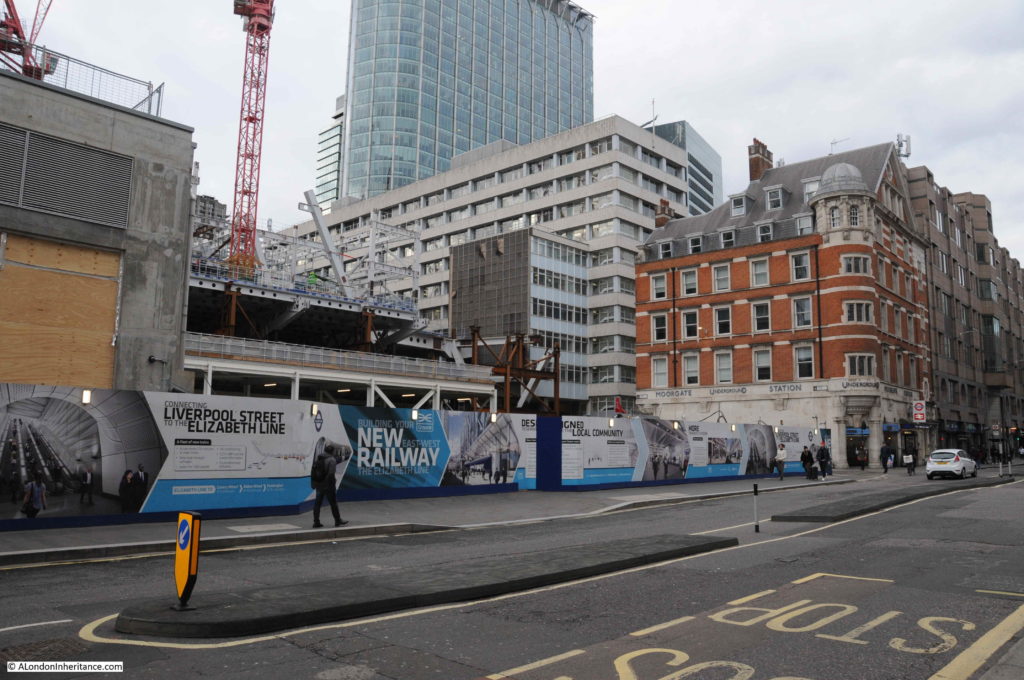
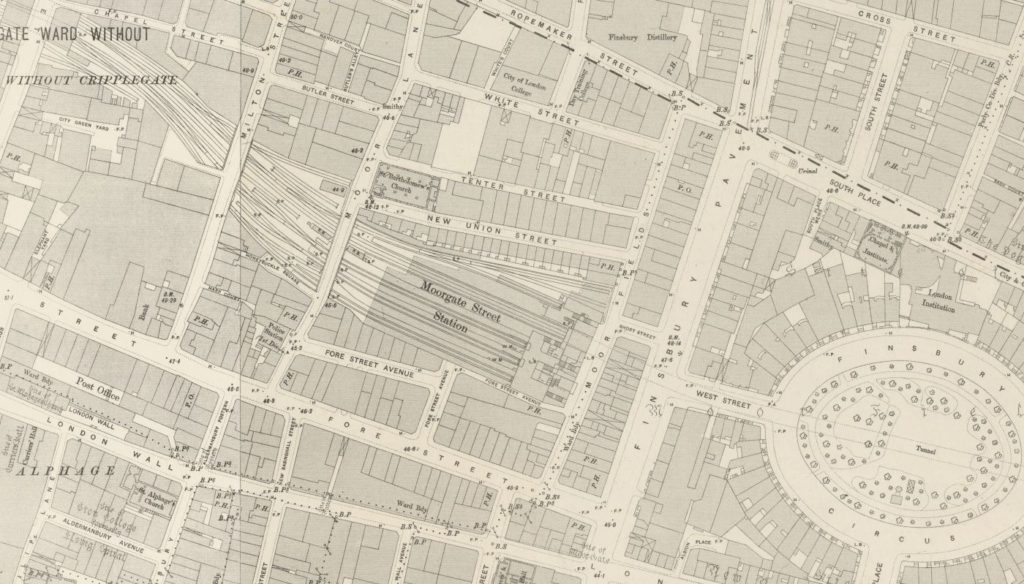
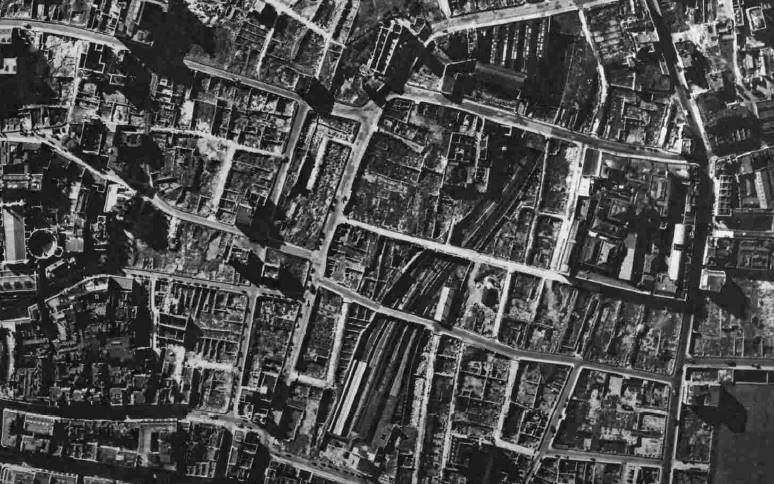
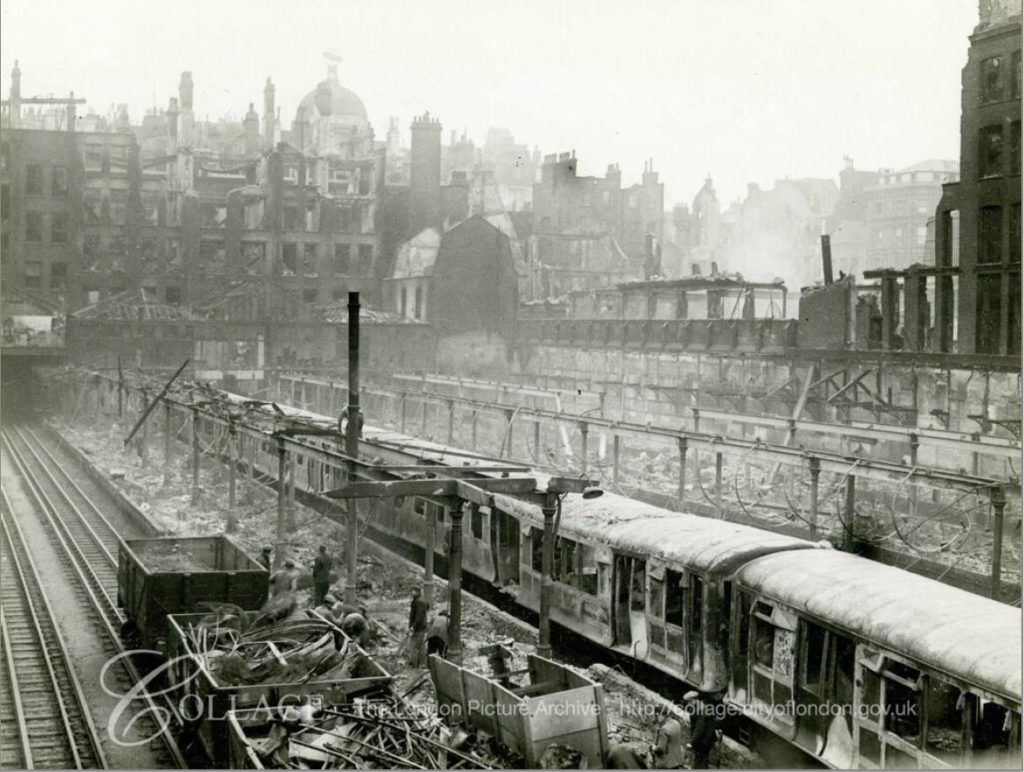
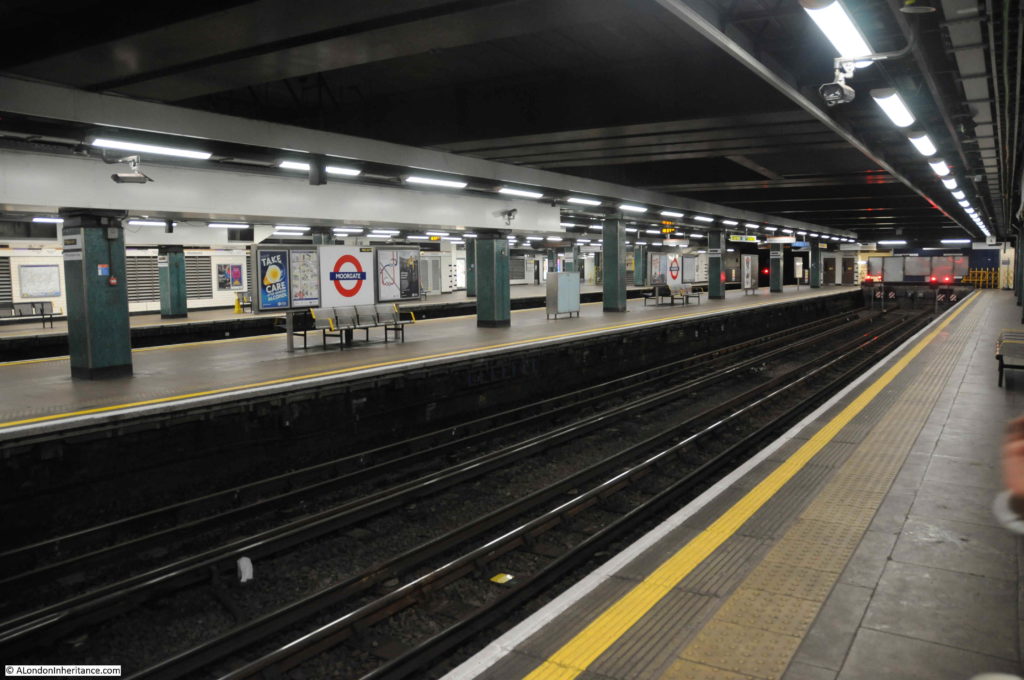
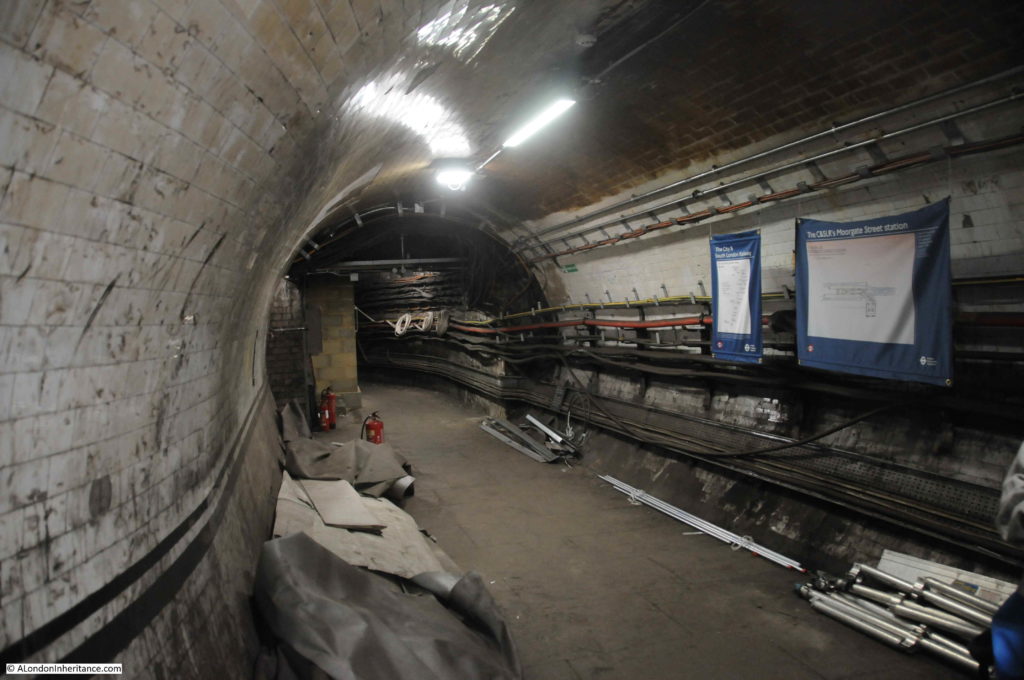
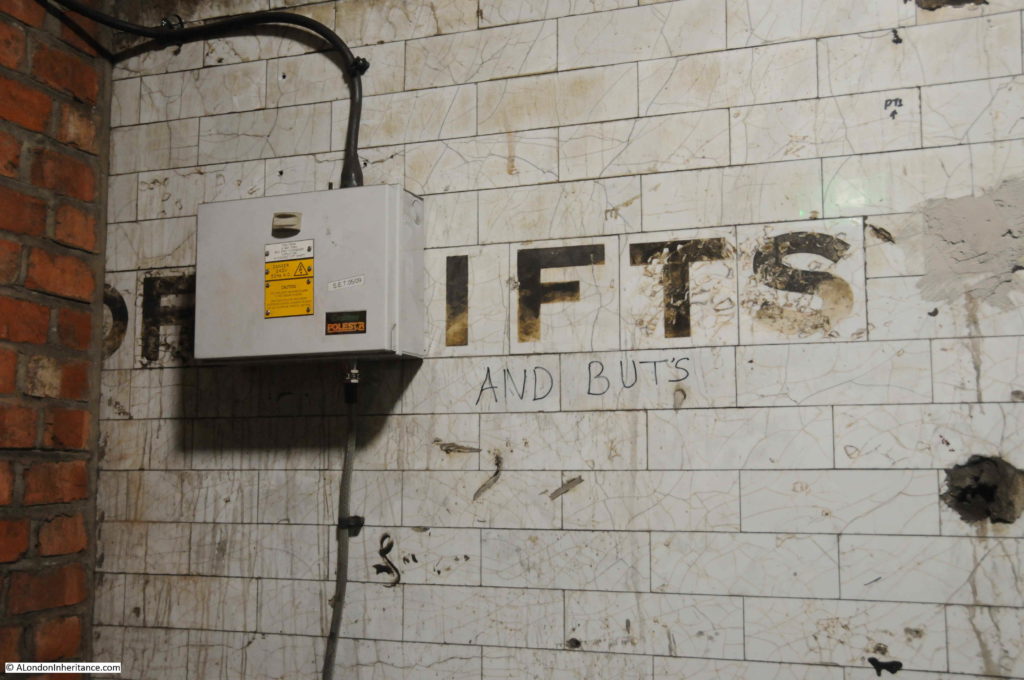
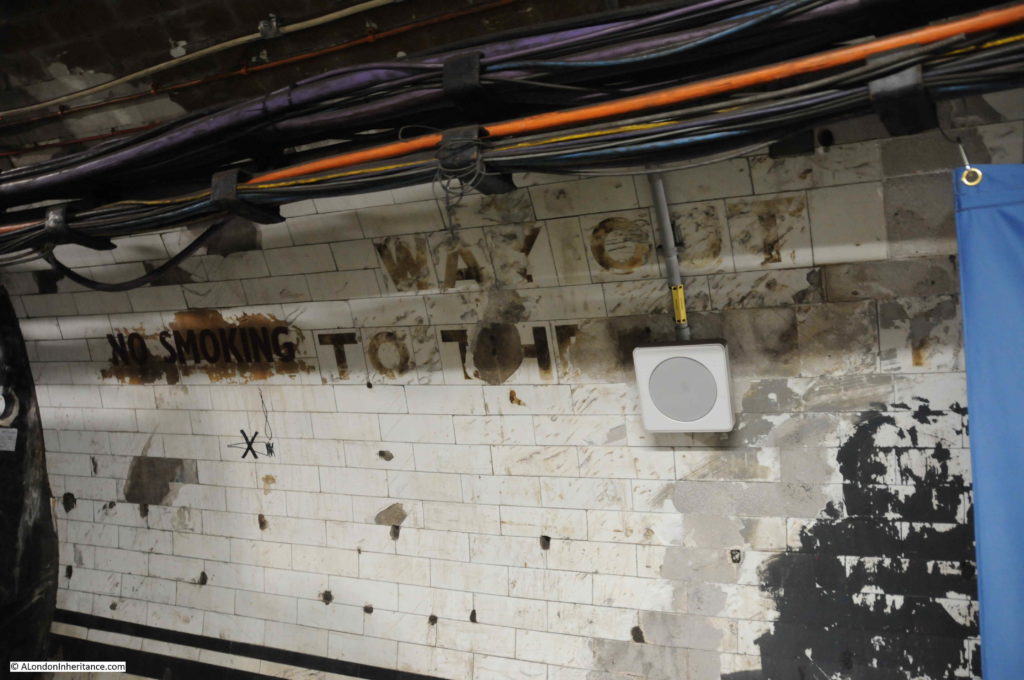
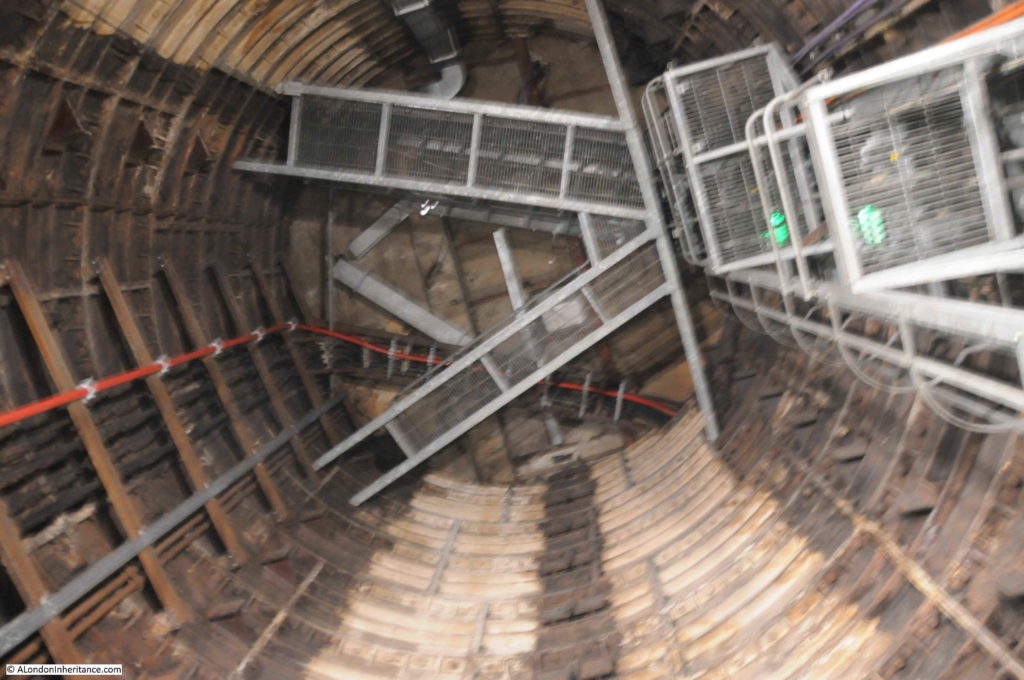
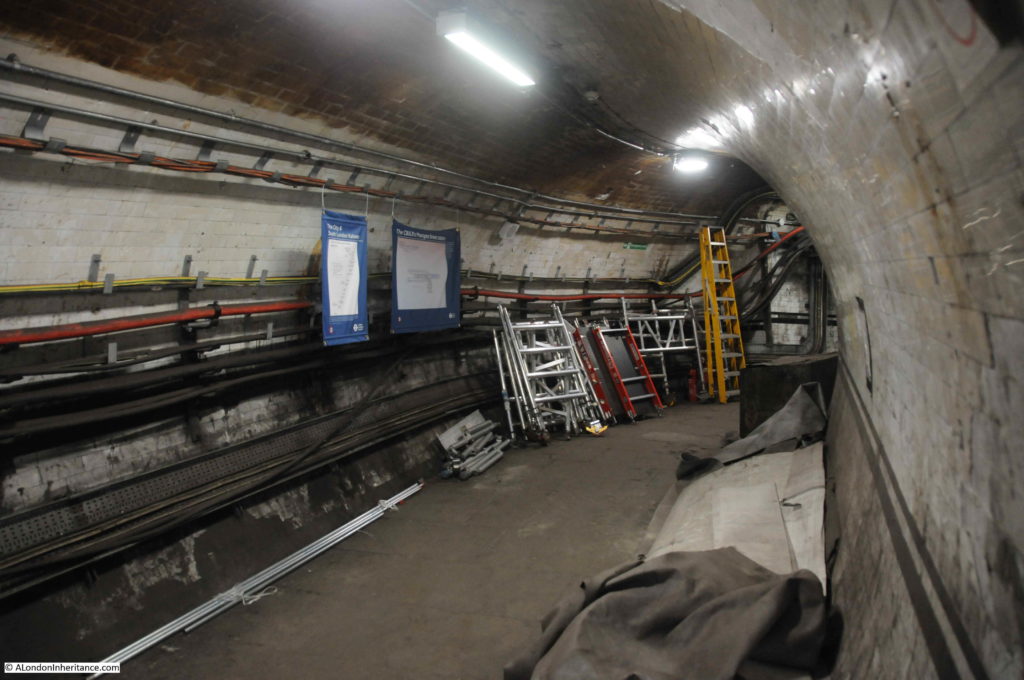
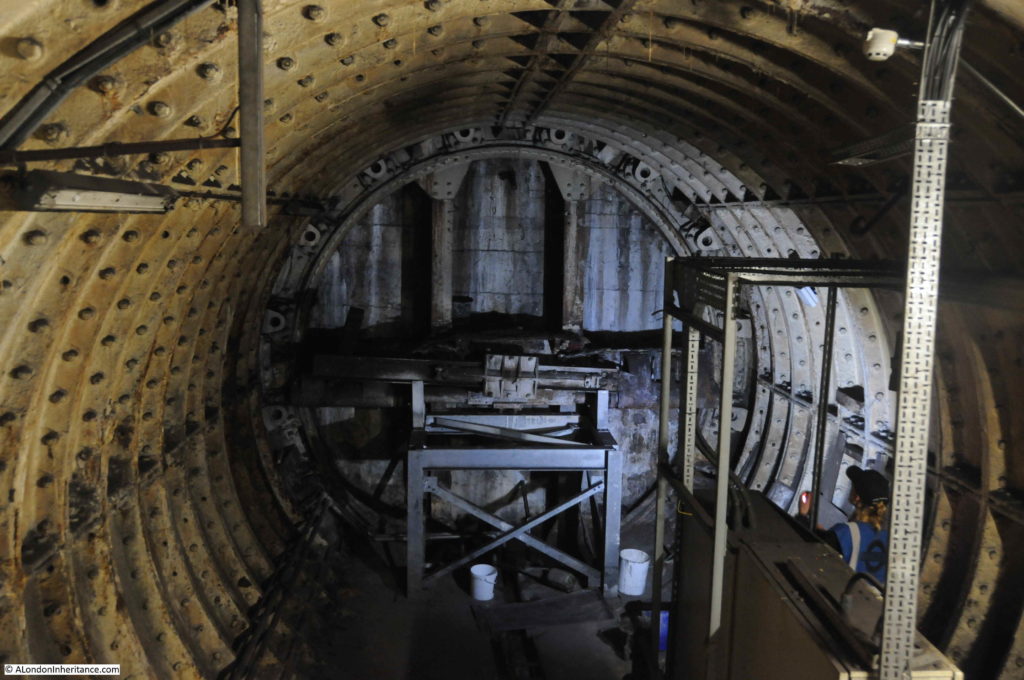
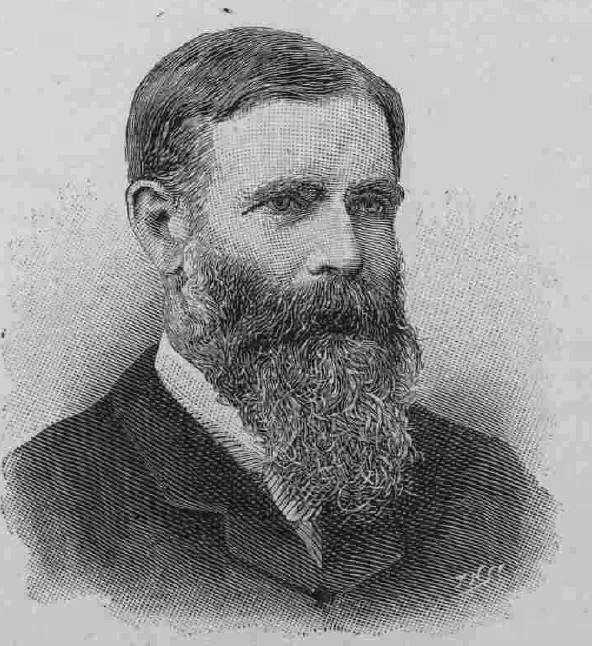
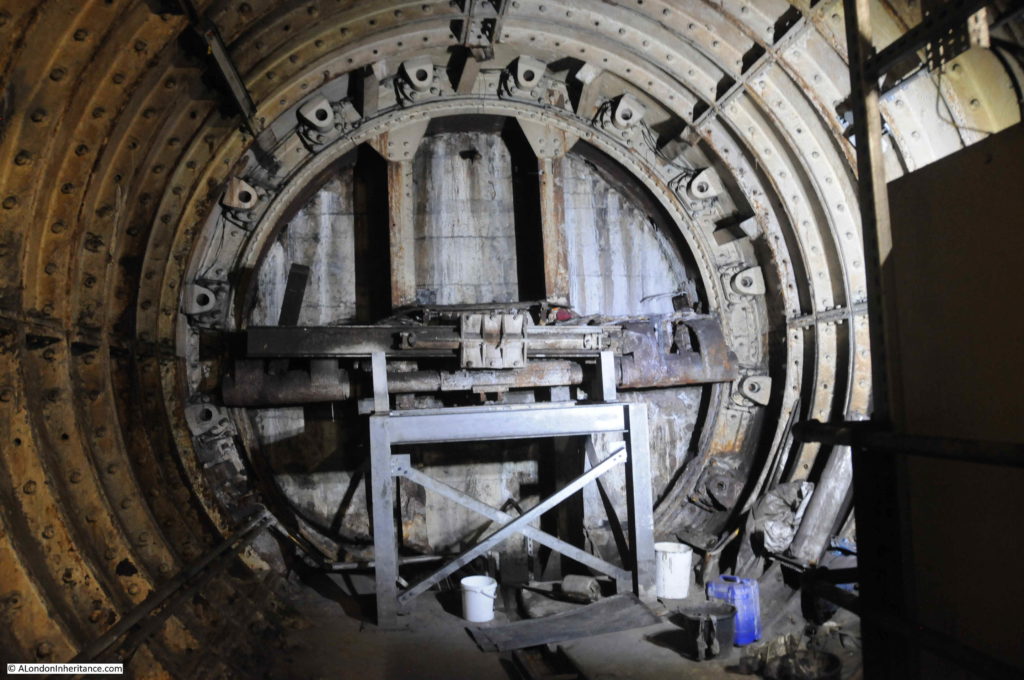
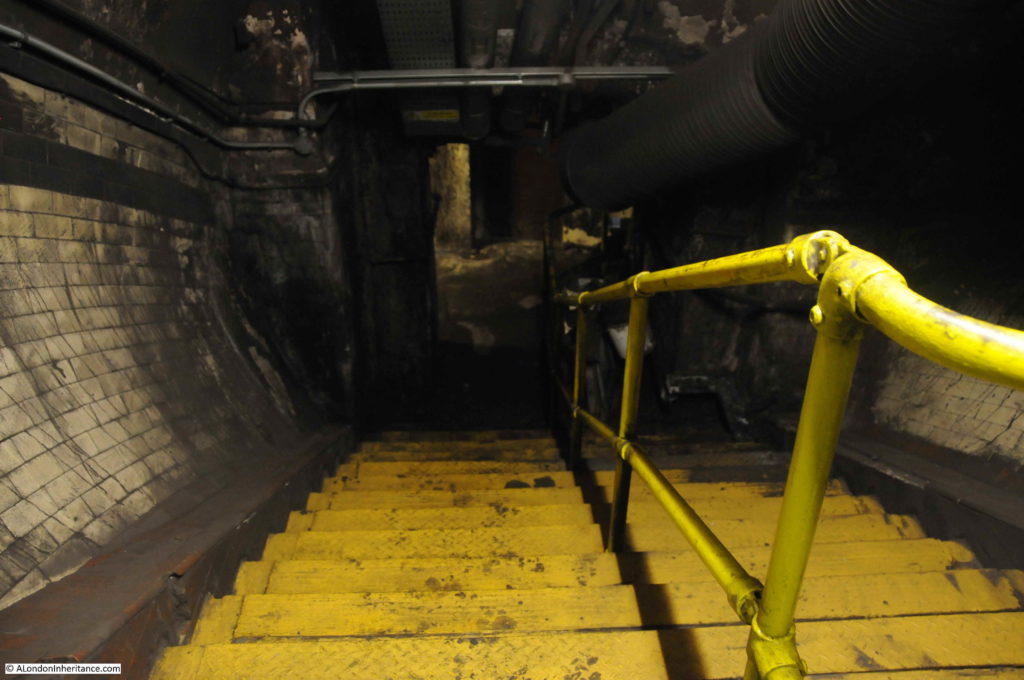
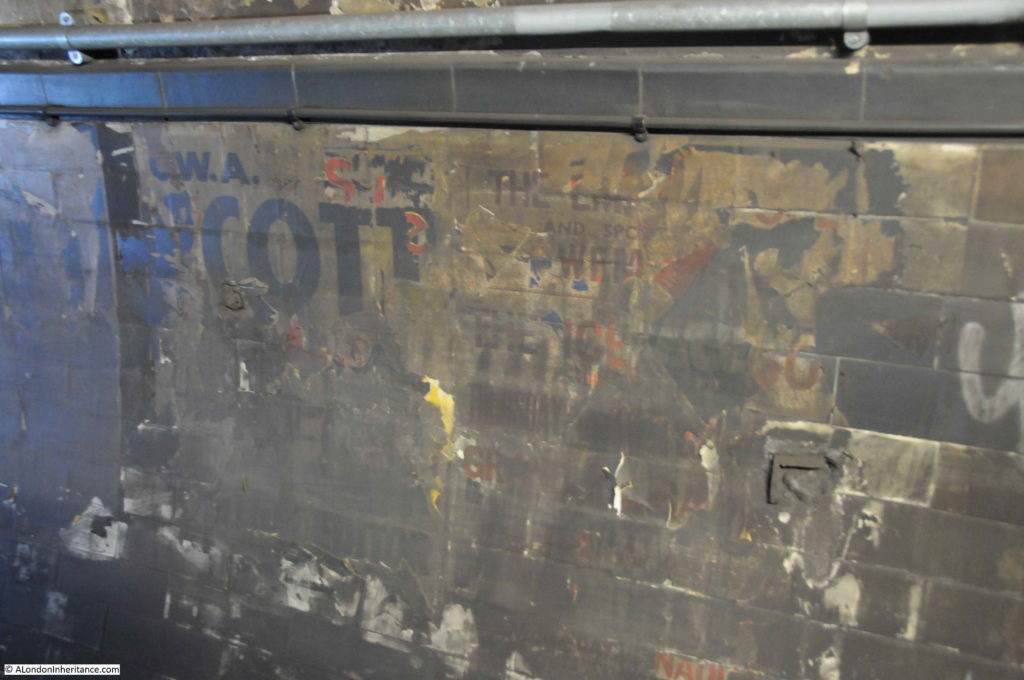
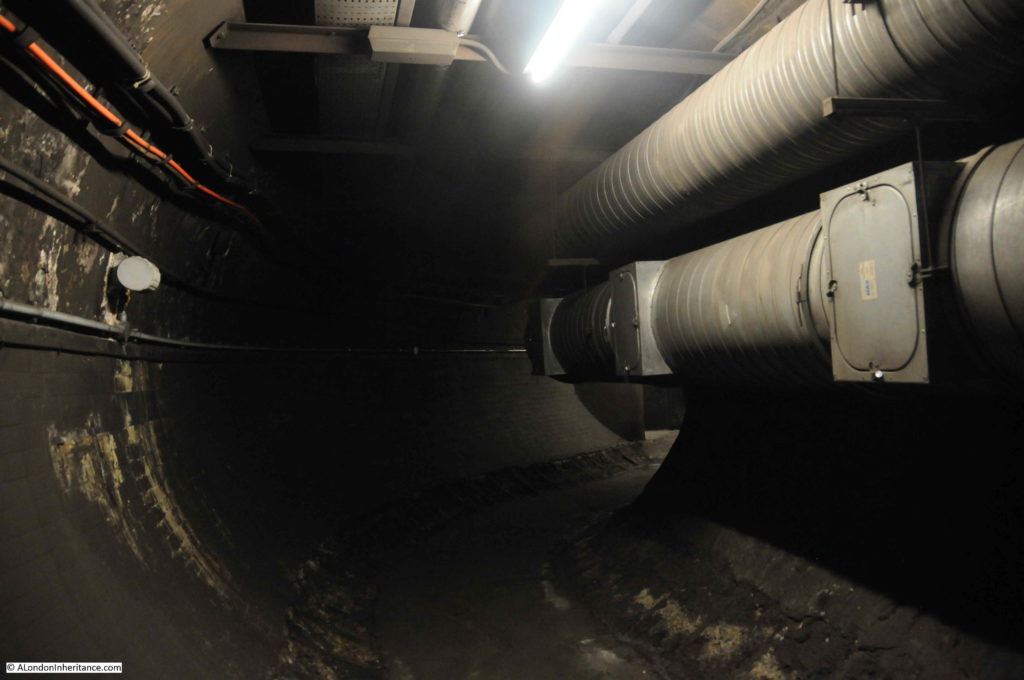
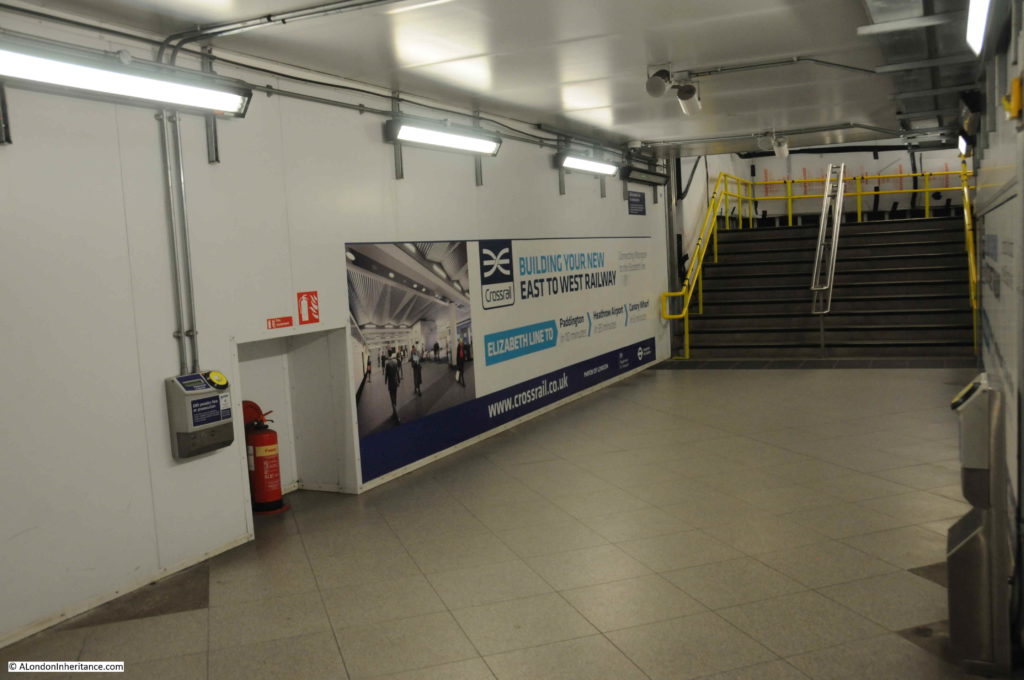
Are you going to do Electra House – or have you already done it and I missed it
A really interesting post – I had no idea Moorgate station was so old.
Also, amazing to see in place the actual Tunneling Shield invented by James Greathead – I have often admired the statue of him outside the Royal Exchange and wondered what this great life-saving invention looked like.
They’re still using the updates to this when tunneling next door on the new Elizabeth line.
How well I remember that terrible Tube accident. My dad travelled each day to Moorgate – the relief when he called to say he was safe in the office. Those wide, open platforms of Moorgate always made me feel rather uneasy, as if I had vertigo. I think it was the trains coming and going and no nearby walls but if they were once above ground, that makes sense. Thanks for this.
Several below-ground tube stations have/had island platforms with no walls between passengers and the train; Angel was the best known, before it was rebuilt in the 1990s.
The crash at Moorgate was not in one of the island type platforms, in fact the platform is still used today and is, probably wider than a standard tube platform.
Hi; yes I know, I was replying to the comment from the lady who said platforms with no walls made her feel uneasy
Interesting post, as ever. I’ve always wondered whether it would be feasible to bring the DLR at Bank to link up to the Great Northern line at Moorgate and make a through service.
Incidentally the tragic crash at Moorgate in 1975 led to the ending of the Northern Line stub from Finsbury Park to Moorgate and the possibility of the old line re-opening from Finsbury Park to Highgate (and beyond) was no longer possible. The crash, and subsequently the line becoming part of the Great Northern service, meant there was no need to shunt tube trains from the depot at East Finchley to Finsbury Park and the track and bridges were removed.
Great article. Possibly my least favourite station in central London. However, the article does put it’s construction and appearance into perspective. I will usually avoid using it, but next time might spend a bit of time looking around.
The line from Moorgate to Finsbury Park has always been one of London’s minor mysteries to me, as I’ve never had cause to use it in the 30+ years I’ve been living here. A little excursion to look forward to when we’re allowed out again.
Fascinating post. I’m now going to find out more about Tunnel Boring Machines during “Isolation”. Many thanks.
Thank-you for another splendidly illuminating post. One walks through a Greathead shield when transferring between the Waterloo and City Line and the Docklands Light Railway at Bank. There’s some information here…
https://www.ianvisits.co.uk/blog/2008/03/29/greathead-shield-at-bank-station/
The shield marks the end of the Waterloo and City’s former ‘headshunt’, an extension of the running lines that allowed a train to draw past the platforms.
Great post. I have 1980s memories of The Moorgate Buttery at street level – best cheese rolls around
The Moorgate Buttery! Remember it well, and Foxes the umbrella shop, The City Boot on the high walk, and and a branch of Benjys, selling the best and cheapest torpedo rolls in the city.
became “The Upper Crust” …. nothing like the Buttery
Great post, great memories of this area. In the mid 1950s I worked in Copthall Close off Moorgate, for an American Insurance Co. very near Moorgate Tube Station. Some of the girls in our office often went to a greasy-spoon cafe for our lunch, usually ham, egg, and chips. When we got back to work our coats smelt of grease, so we put them on hangers and hung them out off the windows, much to the amusement of the young stockbrokers in the office opposite . We also used to go and watch the ladies playing netball in Finsbury Circus, happy days. Your posts always make my day, thank you for cheering us up especially now.
It’s too bad the lifts weren’t refurbished and kept in service, considering that wheelchair users would be able to get to the platforms.
Most interesting post. For a short time in 1967, before I left to live in Western Australia, I worked in Finsbury Circus and travelled from Letchworth to Moorgate by train. I don’t remember having to change anywhere, is this my memory failing or would that have been possible?
The trains from Letchworth now terminate at Kings Cross, so today you’d have to change at Finsbury Park, might have been different in 1967,but I think the only line that used the spur then ran from Finsbury Park, Drayton Park, Essex Road, Old Street and Moorgate.
Prior to 1976 trains certainly ran to Moorgate direct from Hitchen so it’s probable that they also did from Letchworth.
Having stopped at Finsbury Park they then continued along the main line to ‘Kings Cross York Road’. This station was just to the North East of the main terminus, just outside the Gasworks Tunnel. From York Road they descended into a tunnel under the Eastern side of the terminus to join the ‘Widened Lines’ parallel to the Metropolitan and Circle lines which took them to Moorgate. There’s more information here…
http://www.disused-stations.org.uk/k/kings_cross_york_road/
I used to use the above service myself!
On my bucket list to do one of these underground tours
You must. I promise you, you will not regret it. Did Piccadilly Circus back stage before Christmas and was amazed: by the history, the sudden temperature changes, the dust, the enormous fans and best of all, the knowledgeable, concise and engaging talk. Do yourself a favour and book soon as we’re allowed out of our own particular bunkers.
Thank you for the information Ian Bull and the most interesting link
Thank You for this interesting article. In the sixties I used to travel through Morgate to work on the Metropolitan Lane. My Mother said My Grandmother had lived nearby-never telling the whole story.
When I got a copy of the 1901 Census- found my Grandmother living at 7 Moorfields as a waitress in the coffee shop, my Great Grandmother was the Manageress and the staff all lived together on site. My mother was a snob and omitted that fact.
I live in Canada now but London is still in my heart. Keep up the greata work
Brill post
How deep are the great northern station at Moorgate?
In the first pic, the building that was demolished for the Crossrail works shown to the left was built for AMRO bank at the end of the 70s. Concrete, on an island site (apart from being adjacent to the pub to the left). Uniquely, it was built to connect with the Highwalk/pedway system on two sides (N and S) but never was – within the building at floor 2 level was a passageway for the public that was never used; it passed through and suddenly opened up to overlook the atrium of the block before passing out. All you could see form the outside was two black holes.. It was utterly odd.